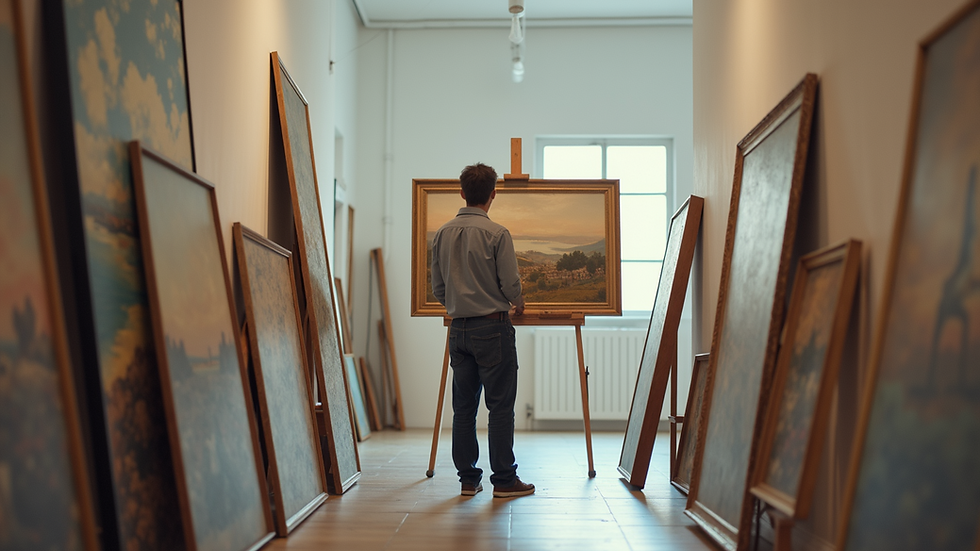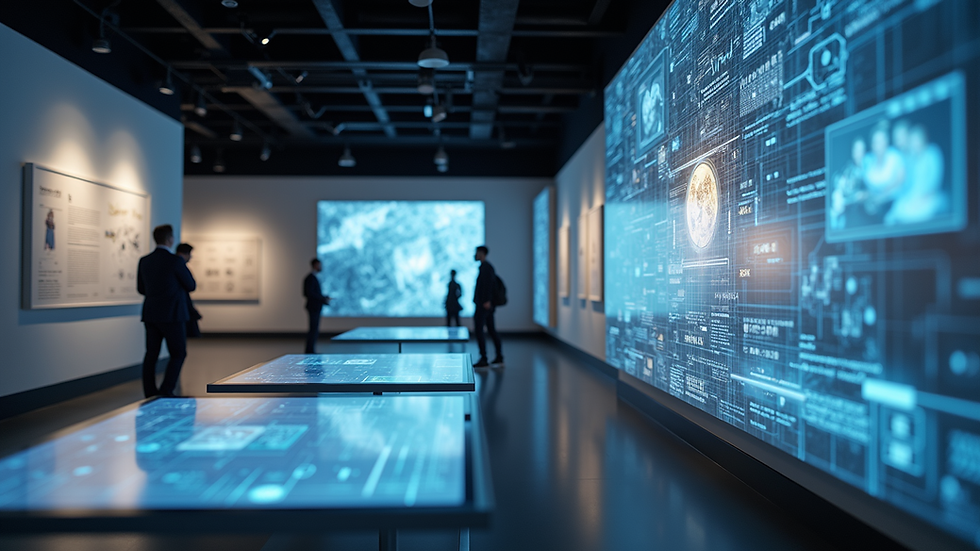The Responsibilities of Art Curators
- Guna Freivalde
- Sep 24
- 5 min read
The art curator role is pivotal in the preservation, interpretation, and presentation of art collections. It demands a blend of scholarly insight, organisational skill, and a deep appreciation for cultural heritage. As someone who has observed the intricacies of this profession, I can attest that the responsibilities extend far beyond simply selecting artworks. The role involves a careful balance of stewardship, education, and strategic planning to ensure that art remains accessible and meaningful to diverse audiences.
Defining the Art Curator Role
The art curator role encompasses a wide range of duties that centre on managing art collections within museums, galleries, or private institutions. Curators are entrusted with the care and development of collections, which includes acquiring new pieces, researching their provenance, and ensuring their proper conservation. This role requires a meticulous approach to documentation and cataloguing, which forms the backbone of any reputable collection.
In addition to collection management, curators design exhibitions that tell compelling stories or highlight particular themes. This involves selecting artworks that complement each other and arranging them in a way that enhances the viewer’s experience. The curator must also collaborate with artists, lenders, and other stakeholders to secure loans or donations, often navigating complex legal and ethical considerations.
The art curator role also involves public engagement. Curators often deliver lectures, write catalogues, and contribute to educational programmes that deepen the public’s understanding of art. This educational aspect is crucial, as it bridges the gap between the artwork and its audience, fostering appreciation and critical thinking.

Key Responsibilities in the Art Curator Role
The core duties of an art curator can be categorised into several key areas:
Collection Management
Curators oversee the acquisition, documentation, and preservation of artworks. This includes verifying authenticity, assessing condition, and ensuring proper storage conditions to prevent deterioration.
Exhibition Planning
Designing exhibitions requires curators to develop themes, select works, and coordinate logistics such as installation and lighting. The goal is to create an engaging narrative that resonates with visitors.
Research and Scholarship
In-depth research underpins all curatorial work. Curators study the historical, cultural, and artistic contexts of artworks, often publishing their findings to contribute to the wider field of art history.
Public Engagement and Education
Curators facilitate educational programmes, tours, and talks. They also produce written materials that enhance visitor understanding and appreciation.
Legal and Ethical Compliance
Navigating the legalities of art ownership, provenance, and loans is a critical aspect. Curators must ensure that all acquisitions and exhibitions comply with relevant laws and ethical standards.
The curator responsibilities extend to liaising with legal experts, especially when dealing with international collections or artworks with complex histories. This ensures that the institution maintains its integrity and reputation.
What Skills Do I Need to Be a Curator?
To excel in the art curator role, a combination of academic knowledge and practical skills is essential. The following competencies are particularly valuable:
Art Historical Knowledge
A strong foundation in art history is indispensable. This includes familiarity with various periods, styles, and artists, as well as an understanding of cultural contexts.
Research Proficiency
The ability to conduct thorough research using archives, databases, and scholarly resources is crucial. Curators must critically evaluate sources and synthesise information effectively.
Organisational Skills
Managing collections and exhibitions requires excellent organisational abilities. Curators must juggle multiple projects, deadlines, and stakeholders simultaneously.
Communication Skills
Clear and persuasive communication is necessary for writing catalogues, delivering presentations, and engaging with the public and professionals alike.
Technical Knowledge
Familiarity with conservation techniques, digital cataloguing systems, and exhibition design software enhances a curator’s effectiveness.
Interpersonal Skills
Collaboration with artists, donors, legal advisors, and museum staff demands diplomacy and negotiation skills.
Attention to Detail
Precision in documentation, condition reporting, and installation ensures the collection’s integrity and safety.

Practical Examples of Curator Responsibilities in Action
Consider a curator tasked with organising a retrospective exhibition of a renowned artist. The process begins with extensive research to select representative works that illustrate the artist’s evolution. The curator must then negotiate loans from private collectors and other institutions, ensuring all legal agreements are in place.
Once the artworks arrive, the curator oversees their condition assessment and coordinates with conservators to address any issues. The exhibition layout is carefully planned to guide visitors through the artist’s career chronologically or thematically. Educational materials, such as wall texts and catalogues, are prepared to provide context.
During the exhibition, the curator may host talks or workshops to engage the public. Post-exhibition, the curator evaluates visitor feedback and documents the event for future reference.
In another instance, a curator working with a family’s international art collection must navigate complex legal frameworks governing cross-border loans and ownership. This requires collaboration with legal experts to ensure compliance with customs regulations and cultural property laws.
The Evolving Nature of the Art Curator Role
The art curator role continues to evolve in response to technological advances and changing societal expectations. Digital technologies have transformed how collections are managed and presented. Curators now utilise virtual exhibitions, digital archives, and social media to reach wider audiences.
Sustainability and ethical considerations have also become more prominent. Curators are increasingly mindful of the environmental impact of exhibitions and the provenance of artworks, particularly those with contested histories.
Moreover, the role demands greater inclusivity, with curators striving to represent diverse voices and perspectives within collections and exhibitions. This shift enriches the cultural dialogue and broadens the relevance of art institutions.

Navigating Legal and Ethical Challenges
Art curators frequently encounter legal and ethical challenges that require careful navigation. Issues such as provenance research, repatriation claims, and intellectual property rights are common. Curators must work closely with legal professionals to address these matters effectively.
For example, when acquiring new works, due diligence is essential to verify ownership history and avoid illicit trade. In cases where artworks are subject to repatriation requests, curators must balance institutional interests with ethical obligations to return cultural property.
Understanding intellectual property law is also critical, especially when dealing with contemporary artists and digital reproductions. Curators must ensure that copyright and moral rights are respected in exhibitions and publications.
The integration of legal expertise into curatorial practice safeguards the institution’s reputation and fosters trust with artists, donors, and the public.
Final Thoughts on the Art Curator Role
The art curator role is multifaceted and demanding, requiring a blend of scholarly expertise, practical skills, and ethical awareness. It is a profession that shapes how art is preserved, interpreted, and shared with the world. Through careful stewardship and innovative engagement, curators ensure that art continues to inspire and educate across generations.
For those involved in managing or collecting art, understanding the nuances of the curator role can enhance collaboration and appreciation. Whether organising exhibitions, conducting research, or navigating legal complexities, the art curator’s work is integral to the cultural ecosystem.
By embracing both tradition and innovation, curators contribute to a vibrant and inclusive art world that honours the past while looking confidently to the future.









Comments